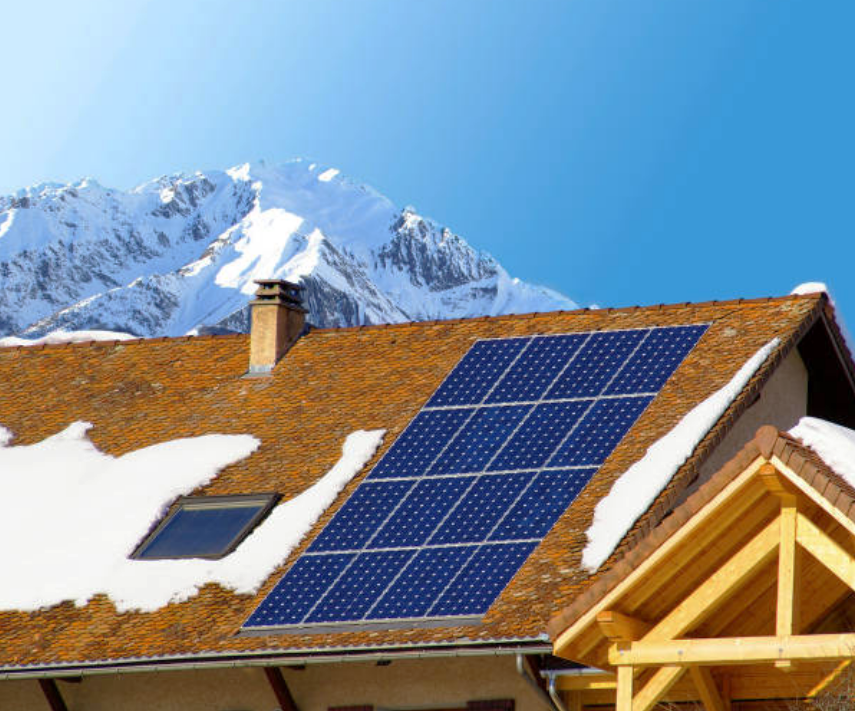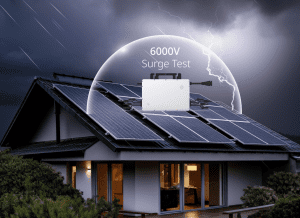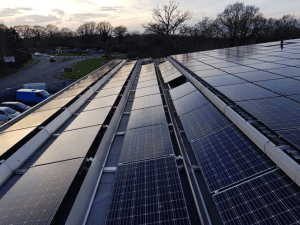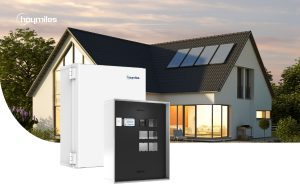Will my microinverter work
in cold weather?
Inverters are an integral part of modern solar setups, as they change the direct current (DC) energy produced by your solar panels into the alternating current (AC) power that’s required for most appliances. In some cases, they also convert AC power into DC, such as in some systems equipped with energy storage. Essentially, they ensure that the electricity generated by your solar system is usable with whatever you need.
Until fairly recently, most solar panel systems used string inverters, and they are still a very popular choice. However, microinverters are becoming increasingly popular for both residential and commercial solar setups. There are a few good reasons for this, such as the improved flexibility, safety, and performance that microinverters can offer.
Microinverters are always installed directly under each photovoltaic (PV) module, leaving them more exposed to the elements. Though this might sound concerning, microinverters are actually built with this in mind, and for the vast majority of people, it will never be an issue during the lifetime of the system.
But for people living in extreme conditions, alarm bells might be ringing. Many people want to know if a given microinverter will work in high temperatures, such as the 50°C days now seen more often in some parts of the world. But what about in extremely cold conditions? Do microinverters work in cold weather?
In this post, we look at some of the things you’ll need to consider when choosing a microinverter for a cold climate.
Will my microinverter work in cold weather?
Sometimes you might notice a drop in power output from your solar panels, or they may even completely stop producing power. Most of the time, this won’t be due to your microinverter not working. For example, there may be less sunlight hitting the panels, reducing energy production, or something blocking the light from reaching them, such as snow.
Saying this, if the thermometer drops low enough, it could actually stop your microinverter from functioning properly. Most people in most parts of the world will never need to worry about this issue, as it simply doesn’t get cold enough. However, some extreme regions – such as those at high altitudes or high latitudes – may sometimes get cold enough.
If you’re in one of these more extreme regions and interested in a microinverter-based system, then it’s worth knowing if your inverter will be suitable.
Important considerations
Some of the key terms and specs you’ll need to be familiar with are:
● Ambient temperature range – If your inverter is within this range, it should function without being damaged.
● Maximum input voltage – The upper limit of voltage that your inverter can receive without being damaged.
● Open circuit voltage (Voc) of your PV modules – The maximum voltage produced by your solar modules (when current is zero).
● Temperature coefficient of Voc – The variation in voltage at different temperatures. This is expressed in the format: -x%/°C.
● Maximum input current – The maximum current that your inverter can receive without being damaged.
● Short circuit current (Isc) – The maximum current produced by your solar modules (when voltage is zero).
● Temperature coefficient of Isc – The variation in voltage at different temperatures. Also expressed in the format: x%/°C.
Ambient temperature range
The temperature affects every component of a solar panel system. The key thing to find out is what temperature extremes yours can handle. Every solar microinverter has an ambient temperature range, so this is what you should look at first when determining minimum temperatures.
Cold is a little different to heat when it comes to microinverter temperature ranges. For example, if the thermometer says it’s 40°C outside, the actual temperature of your microinverter may be significantly higher. This is because the device generates heat itself, and because heat can build up in the space in which the microinverter is housed.
Cold, on the other hand, is easier to measure. The temperature of your microinverter is not going to drop below the ambient temperature you measure, so you can rely on that as a good measure of the microinverter’s temperature.
Some microinverters are more tolerant of cold than others, so always check a microinverter’s corresponding datasheet or contact the supplier for details.
Other considerations
Inverters are used with PV modules, so to know how inverters perform, we also need to look at the attributes of PV modules. The rule of thumb is:
A) As the temperature rises, the PV module’s voltage (open circuit voltage or Voc) will decrease.
B) As the temperature falls, the PV module’s voltage will increase.
Let’s take the local average winter temperature as a benchmark, and a situation where your inverter’s maximum input voltage is greater than your module’s Voc at that temperature. In these conditions, your inverter would still work normally.
In the opposite situation, where the inverter’s maximum input voltage is lower than your module’s Voc, the inverter would not work.
Calculating your module’s Voc at a specific temperature
To calculate your module’s Voc at a specific temperature (x℃), you will need the temperature coefficient of Voc mentioned above and the current temperature difference from the module’s standard testing temperature (25℃). The formula you’ll need to use is:
Voc × (1 – |25℃ – x℃| × temperature coefficient of Voc)
Let’s work through this with some realistic figures.
For example, let’s assume your module’s Voc is 54.80V (under standard testing conditions), the temperature coefficient of Voc is -0.25%/℃, and your average winter temperature is -20℃. The formula to calculate your module’s Voc at this temperature would be:
54.80 V × [1 – |25 – (-20)| × (-0.25%)] = 60.97 V
where 60.97 V is the actual Voc of your module. In this case, if your microinverter’s maximum input voltage is less than 60V, then it could be damaged and no longer be usable.
Similarly, if your inverter’s maximum input current is greater than your module’s Isc at your winter temperature, then the inverter would operate normally. In the opposite situation, your inverter would not operate correctly and could be damaged. The calculation for this is similar to the Voc formula above.
Hoymiles: Open energy for all
Hoymiles’ new generation of HMS-series microinverters offer industry-leading specs for optimal performance, even in extreme conditions. The HMS series units have an ambient temperature range of -40°C to +65°C, a maximum input voltage of 65V, and a maximum input current as high as 16A.
Get in touch to learn more about our microinverters or the rest of our range of high-performance, cost-effective solutions for solar.




